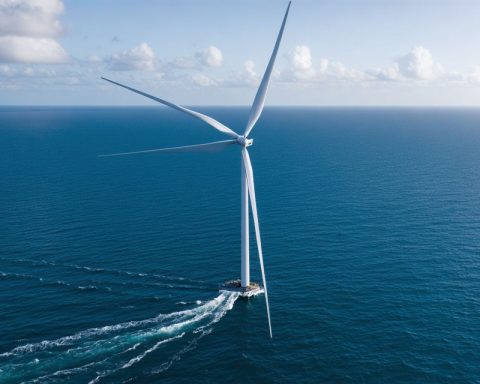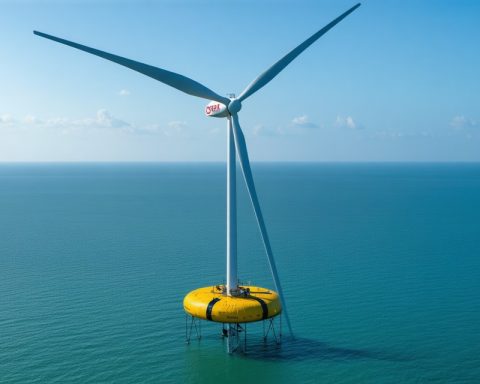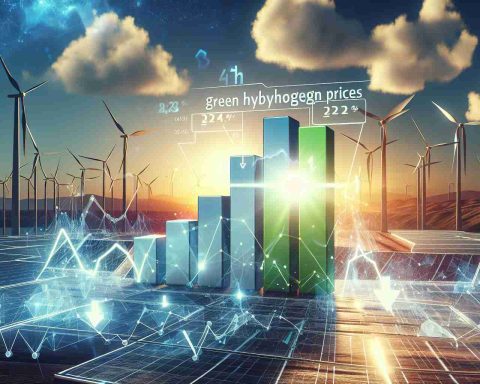October 18, 2024
By: Jessica Langford
Researchers in the United States are delving into the potential of hydrogen production in the Midcontinent Rift, a vast geological formation running from Lake Superior through various states. The University of Nebraska-Lincoln is at the forefront, investigating how to harness this geologic hydrogen. Five years ago, a test well was drilled in Nebraska, revealing promising data. Specialists suggest that the rift’s unique conditions might preserve the hydrogen. Such findings could mean an economically viable amount of this renewable resource beneath the surface. There are speculations about similar potential in other global rifts, including France and Russia, where water and volcanic rock interactions might continually generate hydrogen.
In the Netherlands, scientists are raising alarms after discovering significant hydrogen emissions from industrial installations, much higher than previously recorded. Employing a novel method involving advanced air sampling technology, they detected emission rates of up to 4.2% from production and storage facilities. This discovery highlights the urgent need for tighter monitoring to better assess hydrogen’s environmental impact.
Meanwhile, the Appalachian Regional Clean Hydrogen Hub has issued a call for innovative hydrogen project proposals, seeking groundbreaking ideas in production and storage. This initiative underscores a global shift toward clean energy solutions.
Italy, leveraging its strategic position, aspires to become a key transit point for hydrogen entering the European Union from external sources, as the nation looks to align with the continent’s growing energy demands.
The Impact of Hydrogen Production on People, Communities, and Countries
October 20, 2024
By: Jessica Langford
As the world shifts towards more sustainable and renewable energy sources, the exploration and production of hydrogen are set to transform economies and societies. Hydrogen production, whether it’s through geological formations like the Midcontinent Rift or innovative technologies, holds the promise of reshaping energy landscapes globally.
The Promise of Geologic Hydrogen
In regions like the Midcontinent Rift, the potential for harnessing geologic hydrogen is becoming increasingly viable. This vast geological formation, stretching from Lake Superior through various Midwestern states, offers unique conditions that may naturally produce and store hydrogen. If successful, this could mean a significant source of renewable energy that reduces reliance on fossil fuels and cuts carbon emissions, impacting the local economy positively by creating jobs and fostering new industries.
Global Interest and the Role of Technology
Beyond the United States, other rift systems in countries like France and Russia are being scrutinized for similar potential. These regions exhibit geological processes where water and volcanic rocks interact to produce hydrogen, suggesting a widespread possibility for natural hydrogen. Advances in drilling and air sampling technology are critical for these discoveries. In the Netherlands, the development of new methods to measure hydrogen emissions has revealed unexpected high emission rates from industrial facilities, prompting a reevaluation of environmental standards and monitoring needs.
Community and Economic Impact
For communities located near potential hydrogen production sites, the economic impact can be substantial. New jobs in drilling, technology development, and maintenance are likely, offering economic revitalization. However, these activities need to be managed carefully to ensure environmental standards are upheld and community concerns are addressed.
Governments worldwide are investing in hydrogen technology and infrastructure. In the United States, the Appalachian Regional Clean Hydrogen Hub is soliciting innovative project proposals to expedite the growth of the hydrogen economy. Italy is another example, aiming to leverage its geographic advantage to act as a crucial transit point for hydrogen entering the European Union from external sources, thus meeting the continent’s growing energy needs.
Controversies and Challenges
Despite its promise, hydrogen production is not without controversy. Critics argue that without stringent regulations, hydrogen could pose environmental risks similar to those of fossil fuels. Moreover, the energy-intensive process of producing hydrogen must be powered by renewable sources to truly be considered sustainable.
The debate extends to the economic feasibility of hydrogen, with concerns about the cost of production, storage, and distribution. Countries and communities must balance investment in hydrogen with other renewable energy sources, ensuring that this shift towards hydrogen does not detract from other pressing energy priorities.
Conclusion
The exploration and development of hydrogen as an energy source represent a significant opportunity for innovation and sustainability. As nations strive for energy independence and reduced carbon emissions, hydrogen stands out as a promising, yet complex part of the solution. Through continued research and investment, and by addressing environmental and economic concerns, the positive impact of hydrogen could be immense across nations and communities.
For more information on hydrogen and clean energy, visit IRENA or U.S. Department of Energy.















